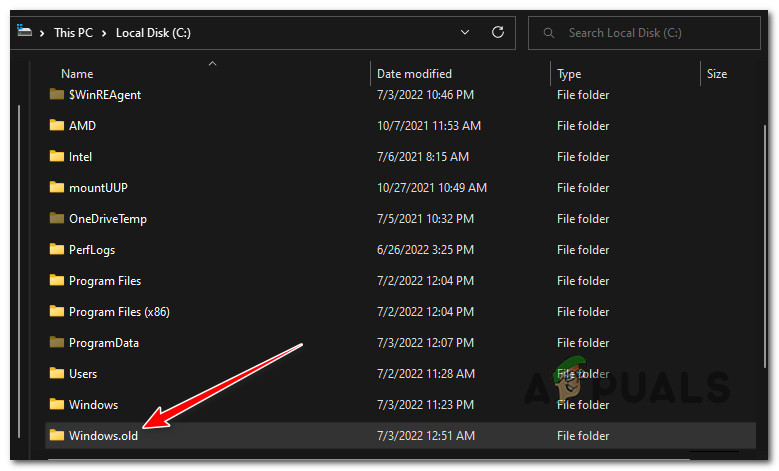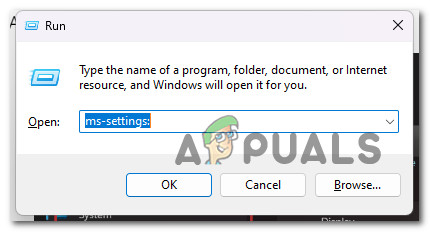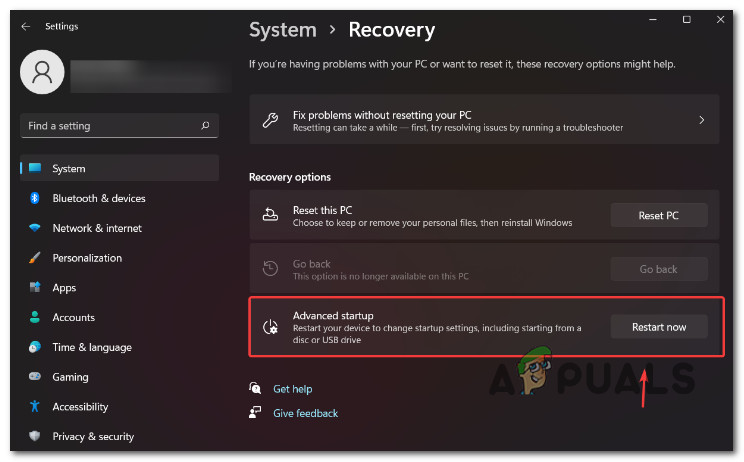After investigating this issue, we realized that there are actually several different methods that you can pursue in order to extend the availability of the Go Back button for more than 10 days. However, some of these methods can only be used if you take pre-emptive action and configure your Windows 11 PC to keep Windows.old for more than 10 days. Here are a few methods that you should explore if you want to use the ‘Go Back’ button after 10 days: But before we get to the actual methods, let’s start by making sure that you actually have the main file (Windows.old) that will be used in order to revert back to Windows 10.
How to check if Windows.old is still available
Before we get to the various methods that will allow you to revert back to Windows 10, you should start by checking if Windows.old is still present on your PC. Note: Starting with Windows Vista, this folder is generated when you upgrade from one version of Windows to another. All of the information from your prior Windows installation is contained in the Windows.old folder. If you don’t like the new version of Windows, you can use it to restore your system to the previous version. You might also delve into the Windows.old folder to discover a specific file that wasn’t correctly copied to your fresh Windows installation. The Windows.old folder essentially basically holds the previous version of Windows. Everything is contained here, including the Windows system files, installed programs, and the settings and data for each user account. The current version of Windows only retains it available in case you choose to revert to that earlier version or if you need to rummage around for a file. However, if the Windows.old is already deleted from your PC, there’s not much you can do in order to go back to the older Windows version seamlessly (you’ll have to clean install or install the Windows 11 feature update). Follow the instructions below to verify if the Windows.old file is still present on your PC or it was removed: In case you discovered that Windows.old is still available, follow any of the methods present in this article to go back to Windows 10. On the other hand, if Windows.old is no longer present on your PC, you can only follow the last two methods featured in this article.
1. Extend ‘Go Back’ Availability via DISM
If you previously discovered that Windows.old is still present on your local installation, the easiest way of extending the availability of the ‘Go Back’ functionality is to open up an elevated Powershell command and use a DISM command to extend the timeframe in which you can go back to your previous Windows version. Important: Keep in mind that this method is only applicable if you previously used the guide above to establish that Windows.old file is still present on your system. If Windows.old was already deleted, follow method 4 or method 5 in this article. If this method is applicable, follow the instructions below to change the days in which the rollback period is available via an elevated Powershell window: Note: This method is confirmed to work on Windows 10 20H2+ and Windows 11 21H2+. If you’re looking for a different method, move down to the next potential fix below.
2. Extend ‘Go Back’ Availability via Registry Editor
If you want to avoid using the DISM utility, you can also modify the Registry key that dictates the number of days where you are permitted to go back to a previous Windows version. However, keep in mind that the same rules apply for this method two: If you are prepared to go this route, follow the instructions below to access Registry Editor, navigate to HKEY_LOCAL_MACHINE\SYSTEM\Setup\UninstallWindow and modify the value of the UninstallWindow to expand on the availability of the rollback period. Here’s what you need to do: If you’re looking for a different method that will allow you to get things done, try the next potential fix below.
3. Go back to using an externally stored Windows.old file (if applicable)
If you have the habit of creating constant backups of your system, there’s a chance you had the brilliance of backing up the Windows.old file on an external drive. If you did this, your OS is not able to delete the .old directory, which means you will be able to go back to a previous Windows version even if you are way past the default 10 days. If this method is applicable, simply plug in the external drive where you have previously saved the backup and move the Windows.old folder to the root folder of your Windows drive. Once you have done this, restart your PC in order to force your PC to become aware that a backup is in place. After the next startup is complete, go check if the ‘Go Back’ button is now available and use it if needed. In case Windows.old is not available and this method was not applicable, follow the next method below.
4. Go back by Uninstalling the Windows 11 feature update
You can go back to Windows 10 by visiting the Advanced recovery menu and removing the most recent feature update in order to get rid of Windows 11 if the “Go Back” option is not functioning or you have previously verified that the Windows.old file is no longer present on your computer. Note: Some impacted customers claim that even if Windows.old is no longer installed on the PC, this approach still functions. Here’s what you need to do in order to go back to Windows 11 by uninstalling the Windows 11 feature update: If this method is not applicable, move down to the final method below.
5. Clean install Windows 10
The only practical way to return to an earlier version of Windows if you have lost the Windows.old file and none of the other techniques have worked for you is to perform a clean install. It’s not ideal, but it will allow you to return to Windows 10 if you went over the default ‘get back’ period. If you’re looking for specific instructions on how to perform a clean install, follow this article here.
G2A PAY Apparently Charges Users 1€ After 180 Days of InactivityApple’s St.Louis Store Disband Plans for Unionization Just Days After…High On Life Performing Exceptional on Gaming Charts Just Days After its ReleaseClosed Back vs Open Back Headphones








